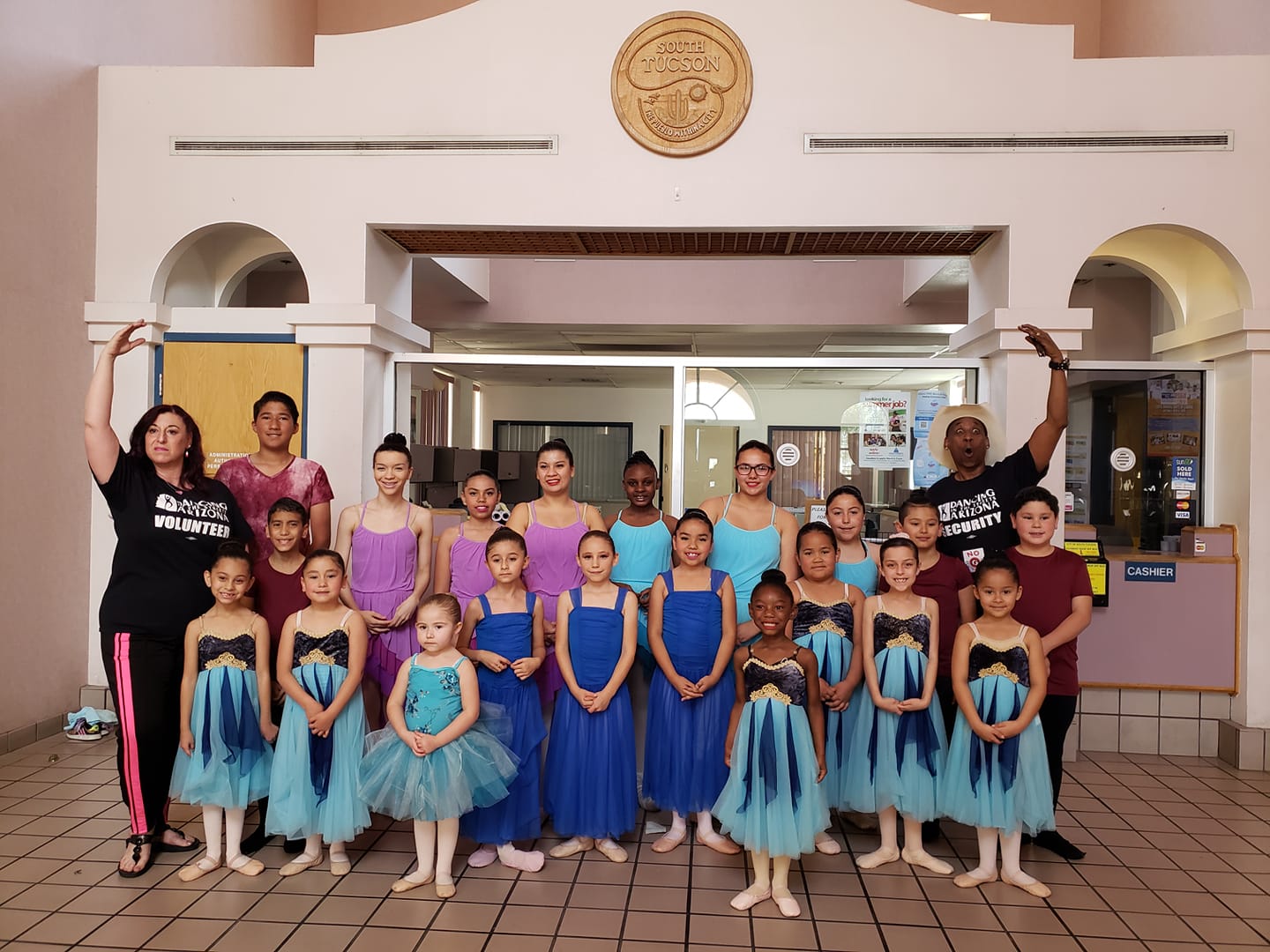
Dancing in the Streets Arizona, a nonprofit 501(c)(3) ballet studio serving minority families in the rural city of South Tucson, was founded in 2008, but its story really began years before that.
Founders and husband-and-wife team Joseph Rodgers and Soleste Lupu met in ballet class and were once high school sweethearts before they parted ways to pursue separate performing careers: Rodgers with Milwaukee Ballet, Ballet Arizona, Feld Ballet New York, Ballet Chicago, and Ohio Ballet; and Lupu with the Southern Arizona Light Opera Company, AZ Dance Theater, La Monde Dance Ensemble, Tacoma City Ballet, and Maryland Youth Ballet. They reconnected 20 years later, moved back to their hometown of South Tucson to care for their parents, and used the money they received from their wedding to open a studio. And just like its name, their studio quite literally started in the streets: Rodgers and Lupu were attending a neighborhood gathering in 2008 when Rodgers offered a young boy $5 to try a ballet step—and not long later, he had 25 kids dancing in the cul-de-sac. “These kids were really hungry to learn something new,” says Rodgers, who wanted to provide a ballet school in South Tucson for at-risk youth and low-income families—a rarity in the impoverished city where 35.6 percent of families live below the poverty line.

“Anyone that wants to learn can learn how to dance,” says Lupu, emphasizing Dancing in the Streets Arizona’s mission is to welcome all children into the studio, regardless of their income, race, or ability. Many students at DITSAZ are first-generation Hispanic immigrants, Indigenous natives, or multiracial. As a nonprofit, the studio relies on donors, corporate sponsors, and grants to pay operating costs, offer scholarships and performance opportunities, and provide dance attire for students in need. And DITSAZ makes it a point to integrate what the owners refer to as “nontraditional ballet bodies” into all of their classes, such as students that are wheelchair-bound or have intellectual disabilities. “They engage with each other and it’s a beautiful thing,” says Rodgers.
Rodgers and Lupu shared with Dance Teacher how they serve their students with a sense of humor, lots of patience, and the support of their community.
You said you are “social working with ballet.” Can you expand on how you help families beyond teaching them dance?
Lupu: We establish that trust that we’re a safe environment. Parents and kids come to us and tell us all this stuff that’s happening in their lives. Sometimes I make calls for them. We give them legal advice and we get in touch with lawyers. We have food that we keep on hand at the studio. You can see it in [the student’s] eyes when they’re hungry. You can tell when their blood sugar is dropping. We pick up kids and take them home depending on transportation. And our students remain students for life.
How do you make sure wheelchair-bound students feel included at your studio?
Lupu: Our first Nutcracker, we used three girls in wheelchairs, and a mom [of a student who uses a wheelchair] asked me how I wanted her to decorate the wheelchairs. It caught me off guard because I was thinking, Don’t do anything. To me the focus is not on the wheelchair, it’s on the kids—the wheelchairs are their legs. She broke down and started crying because she said, “That’s what I’ve been trying to say, but no one’s ever gotten that.” They don’t move their feet, but they move their arms and their upper bodies. They have joy in their facial expression when they’re dancing. With kids that are nontraditional ballet thinkers, you have to keep the class moving, keep them inspired, and you have to help them feel comfortable with making mistakes.

How have you raised funds for DITSAZ?
Lupu: We mostly rely on individual donors contributing $100 or more. We don’t just cold-call someone and say give us money. We’ve built relationships with people from being in the community for years. It’s going to visit donors when you don’t need money, dropping by and giving them flowers, checking in with them, sending handwritten thank-you notes. Those things make a difference.
We invite community leaders to participate, for example, in the Nutcracker party scene we invite them to be party parents. Our outcomes data is really in our performances and talking to parents. That’s one thing that’s challenging being a performing arts school and a nonprofit. When you apply for grants, everyone wants an outcome measure of data. It’s very hard to track data because it’s anecdotal. We see it in the way they carry themselves, we see it in how they react to other people, we see it in their improvement of grades. So having community leaders talk to the families, be around the kids, see a performance—it really is educational for them.

What keeps you up at night?
Lupu: Our students keep us up at night—we can’t leave it at the studio. Wondering, Did we reach them? Did we make an impact? What keeps us up at night is the ones that don’t come back.
Rodgers: And hoping that the kids find their way of self-being. I hope they find their way in life and then they turn around and say, “Thank you to Dancing in the Streets for putting me on the straight and narrow.”





